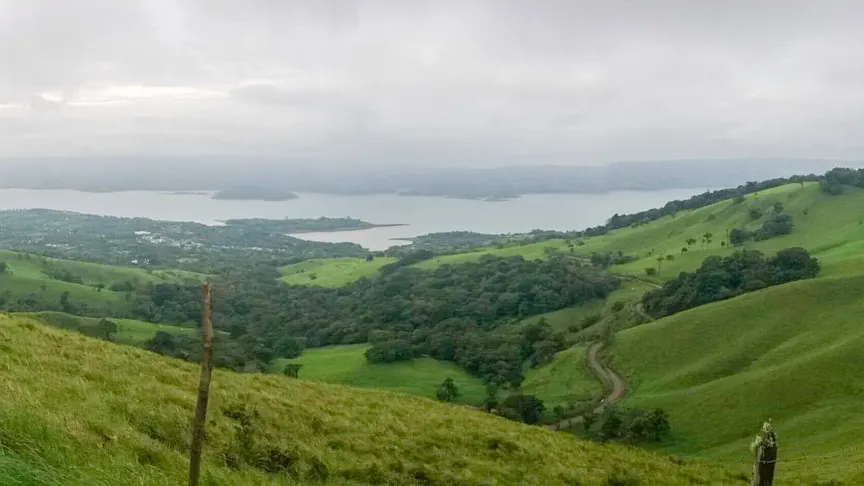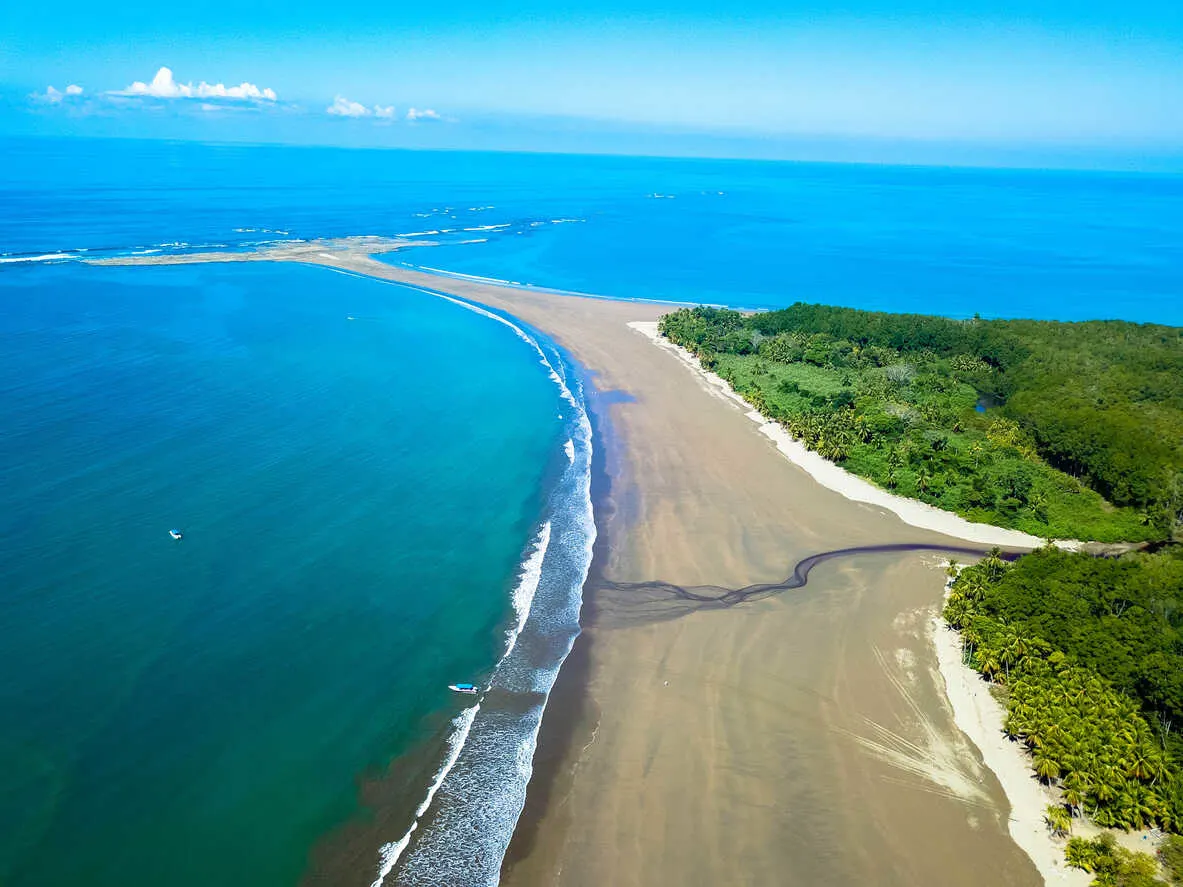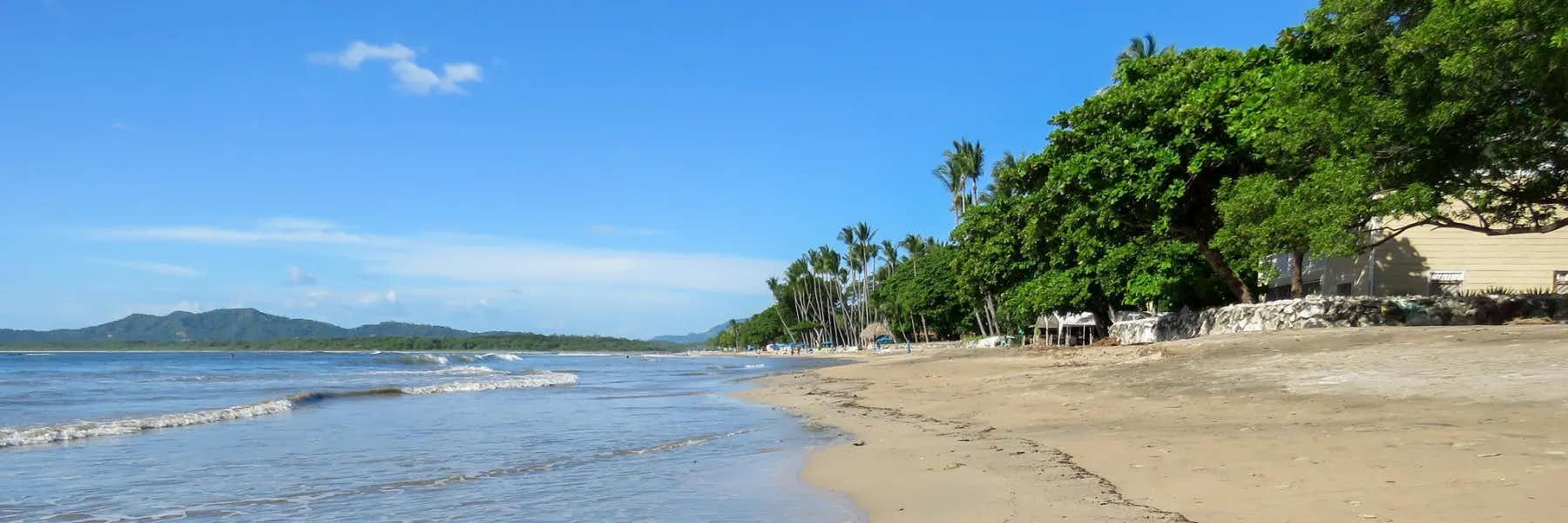Costa Rica is one of the most popular retirement havens in Central America. Expats have been flocking here for more than 40 years. And when you are living in Costa Rica you will enjoy the country’s long stretches of deserted and undeveloped beaches, on the Caribbean and Pacific coasts…dense jungles teeming with exotic wildlife…towering volcanoes, lush green valleys, mountain villages, bustling market towns, quiet rural areas, and hundreds of crystal-clear lakes, rivers, streams, and waterfalls. All these things, and much more, make living in Costa Rica such a draw for retirees and digital nomads.
Get Your Free Costa Rica Report Here
Get Your Free Costa Rica Report Here
Learn more about Costa Rica and other countries in our daily postcard e-letter. Simply enter your email address below and we’ll send you a FREE REPORT - Explore the Old World in Laidback Costa Rica.

By submitting your email address, you will receive a free subscription to IL Postcards, The Untourist Daily and special offers from International Living and our affiliates. You can unsubscribe at any time, and we encourage you to read more about our Privacy Policy.
Whether you choose to live in Costa Rica full- or part-time, you will relish the ideal climate, safety and security, neighborly atmosphere, welcoming attitude of the locals, low cost of living, low-cost and high-quality healthcare, stable democracy, bargain real estate—whether you rent or buy—and countless ways to have fun.
Costa Rica is a stable and safe country with good infrastructure. Numerous airlines fly into the country from many destinations in the United States, Canada, and Europe to two international airports—in San José (SJO), the capital, and Guanacaste (LIR), on the northern Pacific coast.
When it comes to choosing a location and the type of real estate you want, Costa Rica has a lot of choices.
Where to Live in Costa Rica
The Central Valley

Contrary to its name, The Central Valley is actually a plateau. While coastal areas of the country can be hot and muggy, particularly during the rainy season, the valley’s elevation of 2,200 to 5,000 feet makes it comparatively cool all year round, and it has a climate that’s like few others in the world. Daytime highs are usually in the 70s or low 80s, and lows at night are typically in the 60s, with lower average temperatures the higher in the mountains you go. Few residents see a need for central heating or air conditioning. The rainy season stretches from May to November, when most parts of the valley can expect afternoon downpours, with the most intense rainfall in September and October. There’s usually plenty of morning sun, even in the rainy season.
The higher in elevation you are, the cooler the temperatures. And the views of the surrounding mountains, valleys, coffee plantations, and picturesque villages are to die for. Expats in the Valley enjoy going to art galleries, handicraft shops, boutiques, bars, restaurants, concerts, and friendly outdoor markets. A trip to the feria, or weekly farmers’ market, is a real social event as well as a shopping excursion. There, you can buy fresh produce, meat, fish, coffee, and more. A typical couple can fill their fridge for the week for about $40 to $50.
It’s hard to beat the Central Valley when you’re looking for a beautiful, friendly, and relatively inexpensive place to live. Nestled among forests, mountains, and farms are villages where expats have been living side by side with Costa Ricans for many decades. As a result, supportive communities have formed, providing schools, clubs, sports, and a huge range of cultural activities.
The Central Valley—home to about two-thirds of Costa Rica’s population—is also the place to find elegant residential communities, excellent medical facilities, first-class shopping, splendid restaurants, luxurious hotels, and spectacular natural wonders, including volcanoes, soaring waterfalls, roaring rivers, and wildlife-filled forests. As in many other parts of the country, expats in the Central Valley have the opportunity to socialize with local residents, who happen to be some of the most successful and best-educated people in Latin America.
In some parts of the Central Valley, you can find suburban communities like those in upscale parts of California or Florida. To the west of San José, you’ll find rural areas where country estates overlook Costa Rica’s stunning mountain ranges. Throughout the Central Valley there are charming small towns that are like stepping back in time.
Lake Arenal

When driving the road that rings Lake Arenal, Costa Rica’s biggest lake, keep your eyes on the road. Driving 101, right? But it’s hard not to get distracted. Blue morpho butterflies flit across the road, troops of raccoon-like coatis scamper on the shoulder, howler monkeys lounge in the high branches, and bright tropical birds wing it from tree to tree.
It's a good thing there isn’t much traffic. Besides, it’s worth taking the time to pull over and get a better look. There are stunning views of the 33-square-mile Lake Arenal. It’s about 18-and-a-half miles long but only three miles across at its widest—which means that, wherever you are along the lake, you can see the emerald-green hills that rise from its shores on the opposite side.
People come to live around Arenal, about three hours north of San José and three hours east of Liberia, the capital of the Guanacaste province, because they fall in love with these views. The weather—not humid, just moderate and breezy—is also a big draw. So is the affordable real estate and low cost of living. It’s laid-back and peaceful.
There’s plenty to do, especially outdoors. Hiking in the rainforest surrounding Volcán Arenal, at the east end of the lake, you can see more than 200 species of birds, as well as monkeys, coatis, and other picture-perfect wildlife.
The lake itself is a water-sports paradise, and you’ll often have it to yourself. There are hardly ever more than a dozen or so crafts on the water on even the busiest days. Fishing, boating, and kayaking—they’re all here... and Arenal has now become a haven for wind- and kite-surfing. On the breezier west end of the lake, you’ll find one of the world’s steadiest winds from November to April.
It’s ironic that a region with an active volcano would have had a low profile, but that was pretty much true of the Lake Arenal area until a few years ago. A few expats and many ticos knew about the region, but it didn’t attract nearly as much attention as the Central Valley or the Pacific Coast.
The North Pacific Coast

The province of Guanacaste lures new residents with its beautiful coast, world-class surfing, dramatic ocean views, and endless opportunities for fishing, swimming, golfing, yachting, horseback riding, or just sunning yourself on the beach. The climate is also a plus. Unlike the Central Valley, the sun shines nearly every day on the North Pacific Coast, and it rains less often. It’s also warmer, with temperatures usually in the high 80s or low 90s during the daytime, cooling down at night to the upper 70s. That means the landscape isn’t as lush as it is in most other areas of the country, but residents rarely complain.
New residents in this area, popularly known as the Gold Coast, haven’t come from just North America but also from France, Germany, Italy, Argentina, and many other countries. All of which gives many parts of the province a cosmopolitan ambiance.
The area also has a first-rate international airport (Aeropuerto Internacional Daniel Oduber Quirós, near Liberia) and two top U.S.-accredited schools (the Costa Rica International Academy, CRIA, in Brasilito and La Paz School right down the road).
Real estate prices here are understandably higher than in some other places in the country. You can easily spend several million dollars on an oceanfront estate, and houses with only a tiny view of the sea can still be pricey. But property shoppers can find plenty of bargains by looking at condos just a short distance from the coast or even along the coast but away from the chic expat communities around Flamingo Beach, Tamarindo, or Nosara.
A decade ago, transportation was a bit of a headache in Guanacaste, but today it doesn’t pose a problem. All major airlines from North America and some from Europe fly directly to the airport near Liberia, and Costa Rica’s domestic airline (Sansa) serves several national airports in Guanacaste. You can also drive from the Central Valley to many towns on the North Coast in four to five hours—most of them on paved roads.
The Nicoya Peninsula

Just south of the North Pacific Coast is the wide Nicoya Peninsula, which is a sparsely populated and somewhat hard to get to (compared to other areas, at least) region ringed by beautiful beaches on its western and southern edges. Some stretches of coastline in the most rural parts of the peninsula are nearly deserted— you could have a beach all to yourself. Surfing, sport fishing, beachcombing, and just relaxing on the sand are favorite activities here.
If the name “Nicoya Peninsula” rings a bell, it might be because it’s been named by National Geographic researchers as one of the world’s five Blue Zones. These are areas where there is an unusually high percentage of centenarians (people 100 years old or older) on average due to a combination of diet, climate, and lifestyle. With a seafood-rich diet and a low-stress pura vida life with an emphasis on family, it’s no wonder that this region made the list. More recent transplants might not get the full benefit... but it can’t hurt to be nearby.
Nicoya is home to fewer expats and receives fewer tourists than the more popular North and Central Pacific Coasts. One reason is access. Getting there from San José and the Central Valley is an all-day drive. One route even requires an hour-long ferry crossing. The ferry, which takes cars and buses, leaves from Puntarenas on the Central Pacific and arrives in Paquera, on the far southeastern tip of the peninsula. The alternate route compels you to travel nearly all the way to communities like Tamarindo and then head south.
Traveling on the peninsula can also be tricky. There is a paved two-lane highway that runs the length of the peninsula. But many others are dirt roads. Coastal roads near the expat-heavy beach areas can be quite rough, and some routes are impassable in the rainy season, as there are some river crossings without bridges. Still, with some planning, you can get everywhere you need to go without too much hassle. Keep in mind that most journeys will take longer than you think—you have to go more slowly because of road conditions.
The Southern Zone

The South Pacific Coast, also known as the “Southern Zone,” begins at Dominical and extends to the Panama border. It’s a more off-the-beaten path destination with a lot less development. In fact, regulations ban any building over three stories—so you will not see large resorts, hotels, or condo towers. Plus, a large national park covering much of the shore means the beach remains pristine.
Video: Three American Expats Tell Us Why Life is Better in Costa Rica
Get Your Free Costa Rica Report Here
Get Your Free Costa Rica Report Here
Learn more about Costa Rica and other countries in our daily postcard e-letter. Simply enter your email address below and we’ll send you a FREE REPORT - Explore the Old World in Laidback Costa Rica.

By submitting your email address, you will receive a free subscription to IL Postcards, The Untourist Daily and special offers from International Living and our affiliates. You can unsubscribe at any time, and we encourage you to read more about our Privacy Policy.















